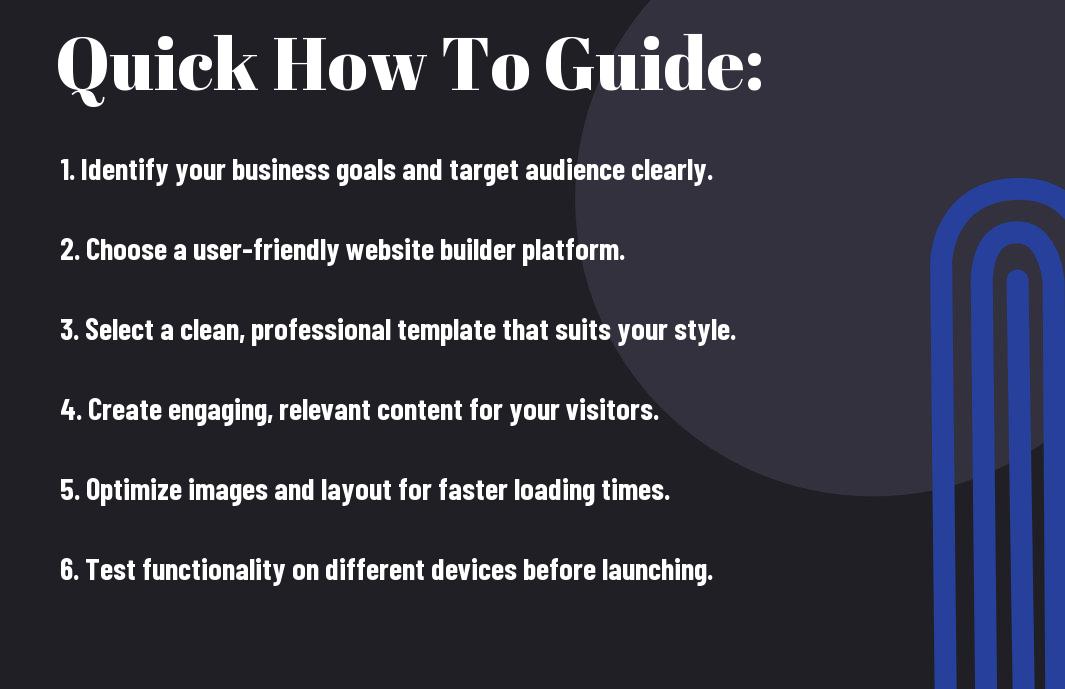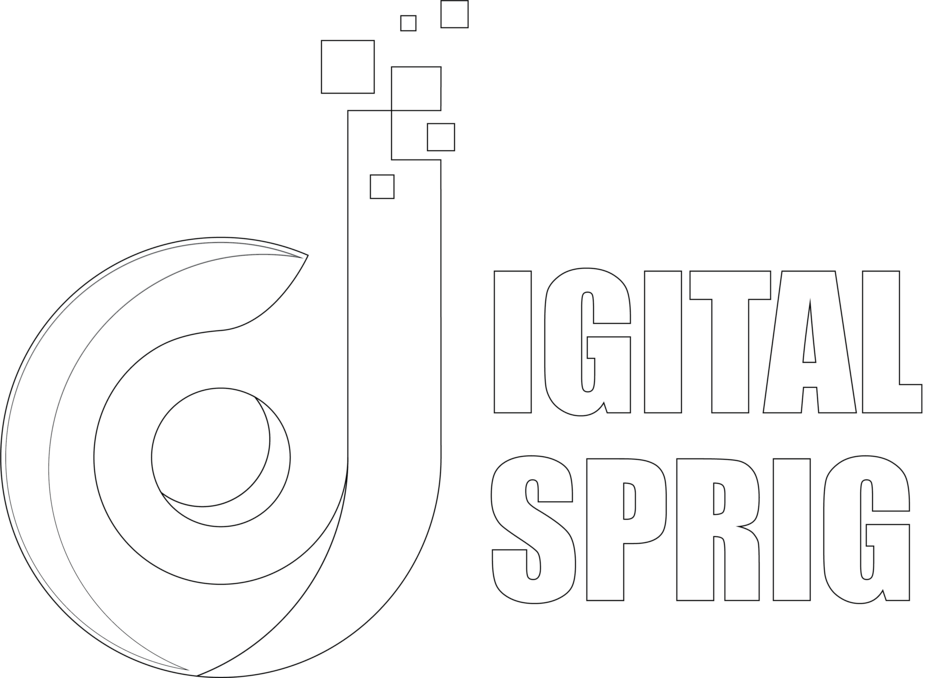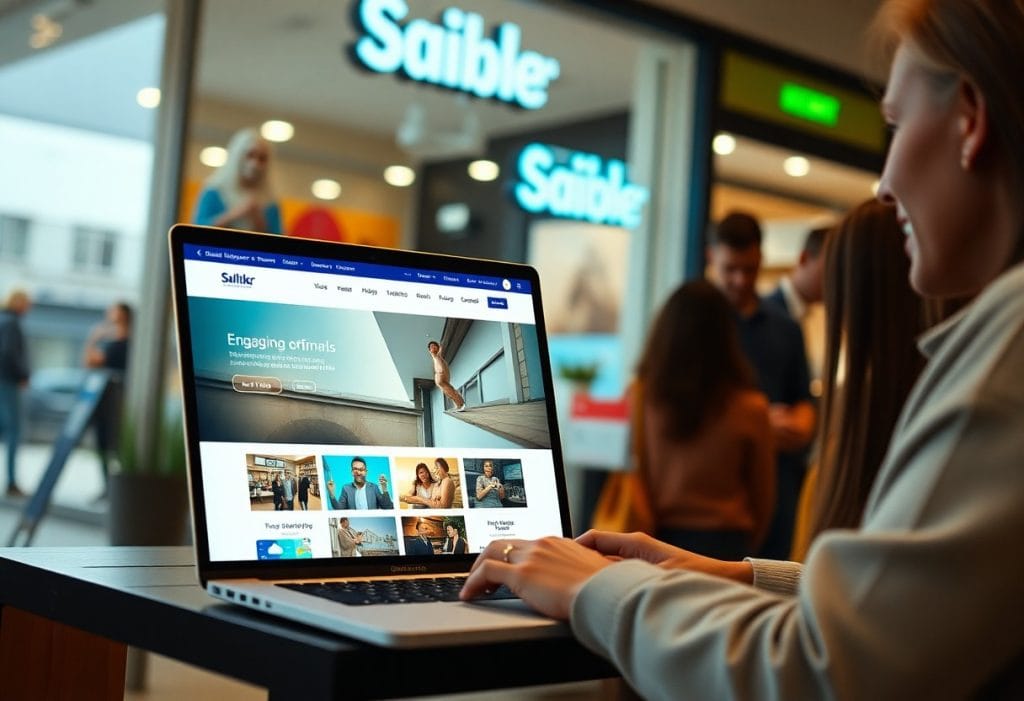Many small business owners struggle to create an online presence that reflects their brand without breaking the bank. However, with the right tools and strategies, you can design a stunning website that not only attracts customers but also enhances your professional image. In this guide, you’ll discover affordable resources, clever tips, and effective design techniques to help you achieve a beautiful website tailored to your unique vision, all while keeping your expenses in check. Let’s transform your ideas into reality!
Key Takeaways:
- Utilize free or low-cost website-building platforms that offer customizable templates to represent your brand effectively without overspending.
- Focus on creating a user-friendly interface by prioritizing navigation and mobile responsiveness, ensuring visitors have a positive experience.
- Incorporate engaging visuals and compelling content to capture your audience’s attention while optimizing for search engines to enhance visibility.

Understanding Your Brand
The first step in designing a stunning website for your small business is to thoroughly understand your brand. Your brand represents the essence of your business, including its values, personality, and unique offerings. By clarifying your brand identity, you can create a cohesive online presence that resonates with your audience and differentiates you from competitors.
Identifying Your Target Audience
One of the key aspects of crafting your website is identifying your target audience. Consider their demographics, interests, and needs to tailor your content and design effectively. Understanding who you’re speaking to can lead to a more engaging website that generates interest and drives conversions.
Defining Your Brand Message
Your brand message conveys what you stand for and the value you provide to customers. It encompasses your mission, vision, and the emotional connection you aim to create with your audience. By articulating a clear brand message, you establish trust and loyalty among potential customers, helping you to stand out in a crowded market.
Your brand message should be concise and impactful, encapsulating the essence of your business in a way that speaks to your target audience. It’s vital to express how your products or services address specific problems or needs. A strong brand message boosts your online presence and, when consistent across all platforms, cultivates a memorable brand identity. This coherence fosters a sense of trust and recognition among your customers, making them more likely to choose your business over competitors.
Choosing the Right Platform
It’s important to select the right platform to bring your website vision to life while staying within budget. Consider factors such as ease of use, customization options, and scalability when making your decision. A suitable platform can enhance your online presence, making it easier for you to connect with your customers.
Comparing Website Builders
Choosing the right website builder can make all the difference in your site’s success. Below is a comparison to help you evaluate what fits your needs:
| Feature | Platform A (Wix) |
|---|---|
| Ease of Use | Intuitive Drag-and-Drop |
| Cost | Starts at $13/month |
| Customization | Limited Design Flexibility |
| Feature | Platform B (WordPress) |
|---|---|
| Ease of Use | Requires Some Learning |
| Cost | Free + Hosting Fees |
| Customization | Highly Flexible with Plugins |
Budget Considerations
If you’re operating on a tight budget, weigh your options carefully. Pricing structures can vary significantly between platforms, so consider monthly fees, upgrade costs, and potential hidden charges for additional features.
Comparing different platforms is important to understanding where to allocate your funds effectively. Each option has its own cost structure, and it’s important to identify any recurring expenses that might arise as you scale. Look out for promotional offers which can alleviate initial costs, but don’t overlook potential transaction fees or feature limitations. By balancing functionality and affordability, you can build a stunning website that meets your business needs without breaking the bank.
Essential Design Elements
Not all design elements are created equal; to capture your audience’s attention effectively, you must prioritize key components. These elements, including color schemes, typography, images, and graphics, play a significant role in showcasing your brand identity. By investing time in selecting the right design elements, you can create a visually appealing and functional website that leaves a lasting impression on visitors.
Color Schemes and Typography
You should choose color schemes and typography that resonate with your brand and audience. A consistent color palette can evoke emotions and create a cohesive look across your website. Selecting readable fonts that complement your visual style enhances user experience, making it easier for visitors to navigate your content.
Images and Graphics Selection
Even the right images and graphics can elevate your website’s visuals and storytelling. This means selecting high-quality images that represent your brand, products, or services accurately while resonating with your audience. Incorporating graphics that reinforce your message or highlight key offerings can enhance engagement and drive conversions.
A strong selection of images and graphics can make a significant difference in your website’s success. Aim for high-resolution images that reflect your brand identity, as poor quality visuals can deter visitors. Utilize custom graphics or illustrations to convey information in an engaging manner and create a unique aesthetic. Stock images can be a budget-friendly alternative, but ensure they are relevant and genuine to avoid appearing cliché. A thoughtful mix of visuals and a compelling visual narrative can captivate your audience and foster a memorable online experience.
User Experience Tips
All small businesses should prioritize user experience to engage visitors effectively. To create a seamless experience, consider these tips:
- Optimize loading speeds to reduce bounce rates.
- Utilize clear navigation for intuitive exploration.
- Incorporate accessible design for all users.
- Keep content relevant and concise to maintain interest.
This will help you foster a satisfying experience that keeps your audience engaged.
Navigation and Structure
If you want your visitors to find what they need quickly, focus on a logical navigation structure. Create a simple menu that categorizes content effectively, allowing users to access important information without frustration. Use labels that are clear and descriptive to guide your audience through your site seamlessly.
Mobile Responsiveness
With the rise of mobile usage, your website must be responsive. This means it should automatically adjust its layout and content based on the screen size of the device being used, providing an optimal viewing experience. Ensuring that buttons are touch-friendly and text is readable without zooming in enhances user satisfaction significantly.
Understanding how mobile responsiveness works can significantly impact your small business’s online presence. By implementing a responsive design, you ensure that your website is accessible and user-friendly on any device, preventing potential customers from leaving due to poor navigation. Key areas to focus on include optimizing images for faster loading, ensuring text is legible, and adjusting design elements to fit small screens. These enhancements can create a positive user experience that encourages visitors to stay longer and engage more with your brand.
Content Creation Strategies
Despite the budget constraints of running a small business, you can still create compelling content that engages your audience and drives traffic to your website. By leveraging various content creation strategies, you can effectively communicate your brand’s message, showcase your products, and attract potential customers without breaking the bank.
Compelling Copywriting
Any piece of content can be transformed into a persuasive tool through effective copywriting. Focus on your audience’s needs and desires, using clear, concise language that speaks directly to them. Incorporate storytelling techniques to help your brand resonate with potential customers, and always strive to evoke an emotional response to encourage engagement.
Effective Calls to Action
On your website, strong calls to action (CTAs) are imperative for guiding visitors towards taking desired actions, whether it’s making a purchase, signing up for a newsletter, or contacting you for more information. Effective CTAs should be clear, concise, and visually distinct to capture your audience’s attention.
Effective CTAs drive conversions and lead potential customers down the sales funnel. Design your CTAs to be action-oriented, using phrases like “Get Started Today!” or “Join Our Community” to convey urgency and value. Position them strategically on your pages, ensuring they stand out through color contrast and size. Test different variations to determine what resonates best with your audience, continually refining your approach for maximum impact.
SEO and Online Visibility
Many small businesses overlook the significance of Search Engine Optimization (SEO), yet it’s vital for improving your online visibility. By optimizing your website, you can attract more visitors through organic search results, leading to increased engagement and potential sales. Learn to implement effective strategies to enhance your website’s performance in search engines, ensuring that your offerings reach the right audience.
Keyword Research Basics
With proper keyword research, you can identify the terms and phrases your target audience is searching for online. Focus on finding keywords that align with your business goals while balancing search volume and competition. This will help you tailor your content effectively, improving your chances of ranking higher in search results.
On-Page SEO Techniques
The implementation of on-page SEO techniques is important for optimizing your website. These methods involve adjusting elements like titles, meta descriptions, headers, and content to ensure that they are search-engine friendly. By properly integrating keywords and enhancing user experience, you can significantly increase your chances of ranking higher on search engine results pages.
This comprehensive approach includes writing compelling titles and meta descriptions that not only incorporate keywords but also attract clicks. Utilize header tags to structure your content for both readability and SEO, while ensuring your website loads quickly and is mobile-friendly to improve user engagement. Additionally, optimizing images and using internal linking can further bolster your SEO efforts, helping you establish a stronger online presence and connect with your target audience effectively.
Final Words
From above, you have learned practical strategies to design a stunning website for your small business without breaking the bank. By leveraging budget-friendly tools, prioritizing user experience, and embracing your unique brand identity, you can create a captivating online presence that draws in customers. Focus on continually improving your site and adapting to your audience’s needs to ensure ongoing success. With the right approach, you can make a significant impact and elevate your business in the digital marketplace.
FAQ
Q: What are the crucial elements to consider when designing a website for my small business on a budget?
A: When designing a budget-friendly website for your small business, focus on several key elements:
- Clear Purpose: Define the primary goal of your website. Is it to sell products, provide information, or generate leads? This clarity will guide your design choices.
- User-Friendly Navigation: Ensure your website is easy to navigate. A clean layout with intuitive menus helps visitors find what they are looking for without frustration.
- Responsive Design: Make sure your site looks great and functions well on all devices, including smartphones and tablets.
- Visual Appeal: Use high-quality images and a cohesive color scheme that aligns with your brand. Tools like Canva can help you create stunning graphics even on a budget.
Q: What cost-effective tools and platforms can I use to build my website?
A: There are many affordable tools and platforms that can help you create a professional-looking website without breaking the bank:
- Website Builders: Platforms like Wix, Squarespace, and WordPress offer user-friendly drag-and-drop interfaces, allowing you to build your site without coding knowledge.
- Hosting Services: Look for reliable hosting providers like Bluehost, SiteGround, or HostGator that offer competitive pricing and good support.
- Templates: Utilize pre-made templates to save time and money. Many website builders offer a variety of customizable templates that you can modify to fit your brand.
Q: How can I optimize my website for search engines without spending a lot of money?
A: Optimizing your website for search engines can be done effectively on a budget by following these strategies:
- Keyword Research: Use free tools like Google Keyword Planner or Ubersuggest to identify relevant keywords for your business. Incorporate these keywords naturally into your content.
- Quality Content: Focus on creating valuable content that answers your audience’s questions. Regular blog posts can improve your search engine rankings while providing useful information to your visitors.
- On-Page SEO: Ensure your page titles, meta descriptions, and headings are optimized with your target keywords. Use alt tags for images and make sure your site loads quickly to enhance user experience.







